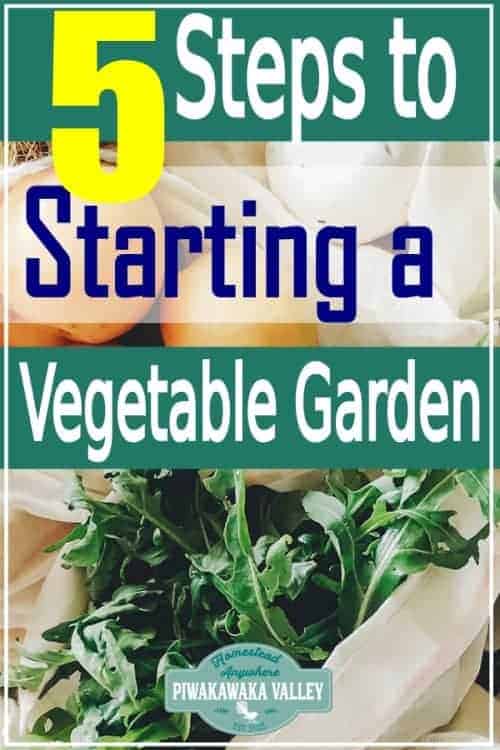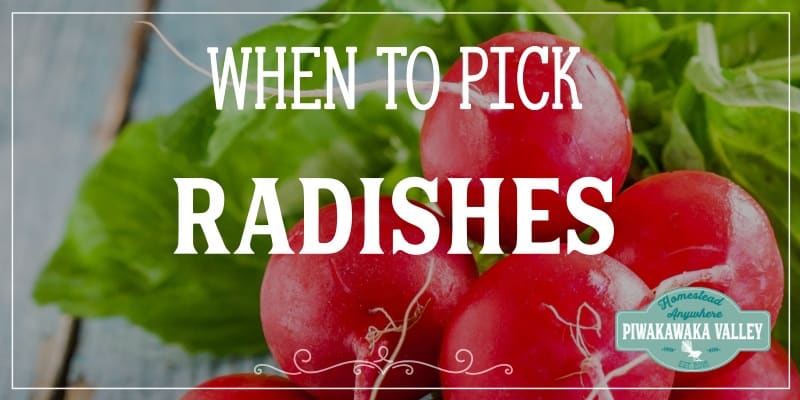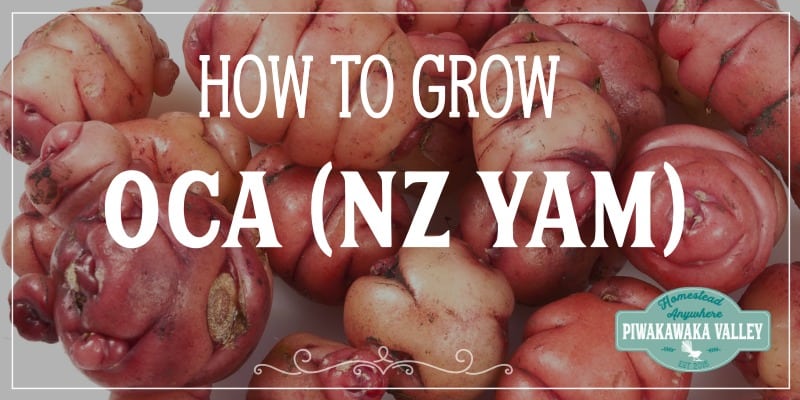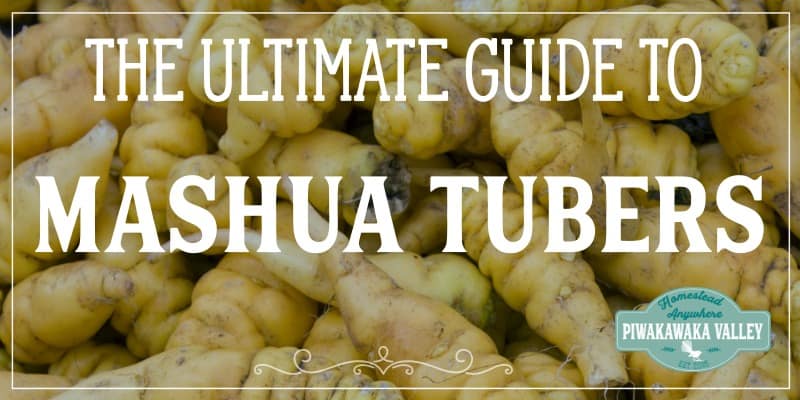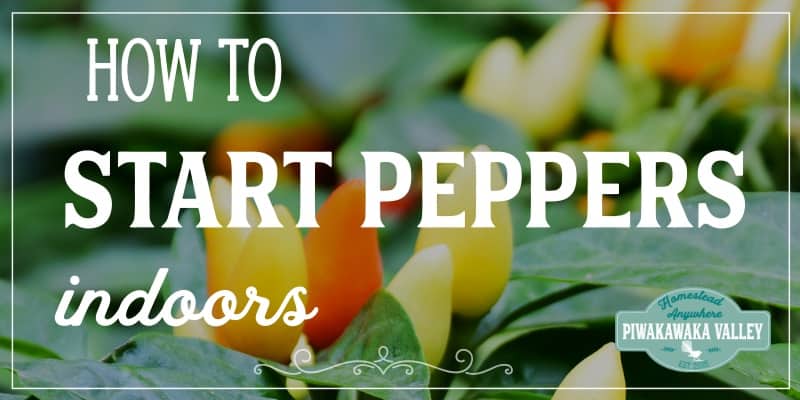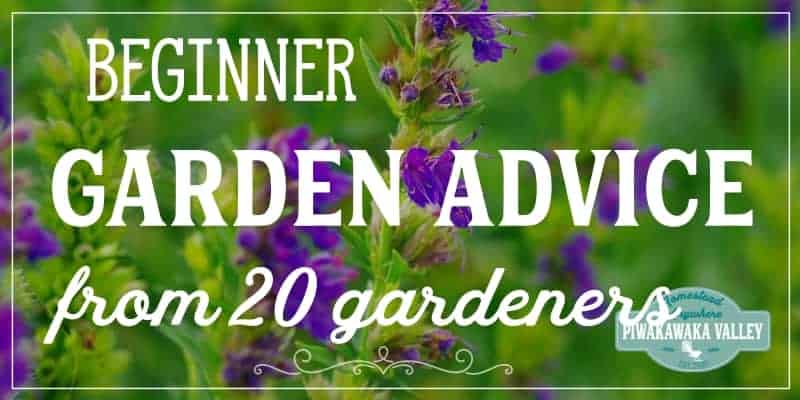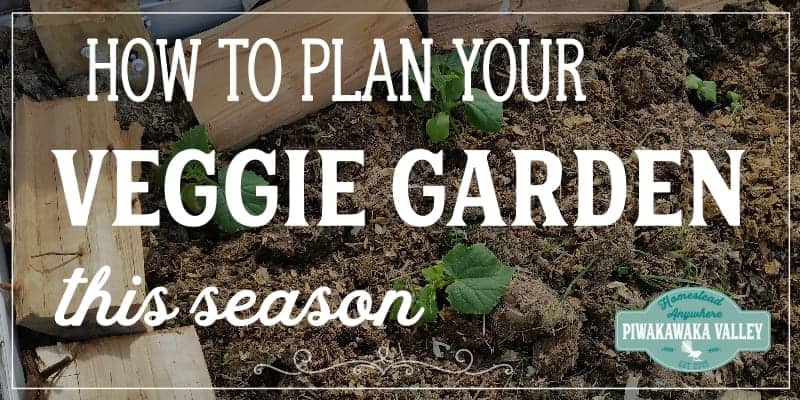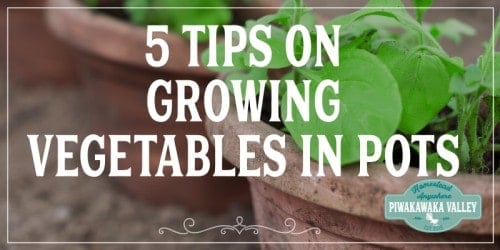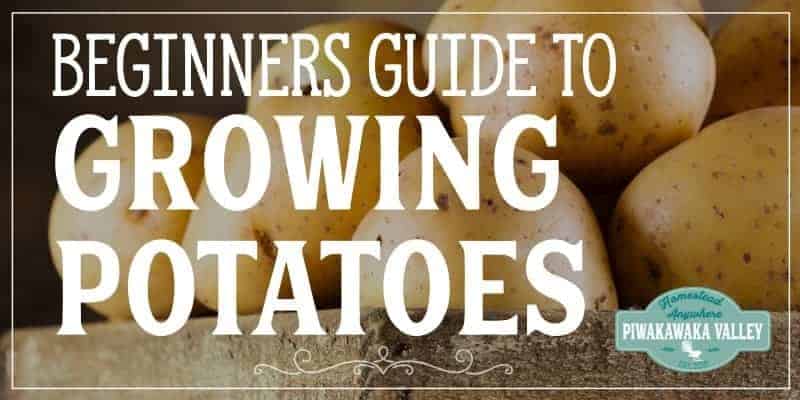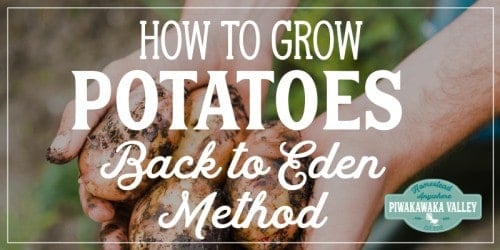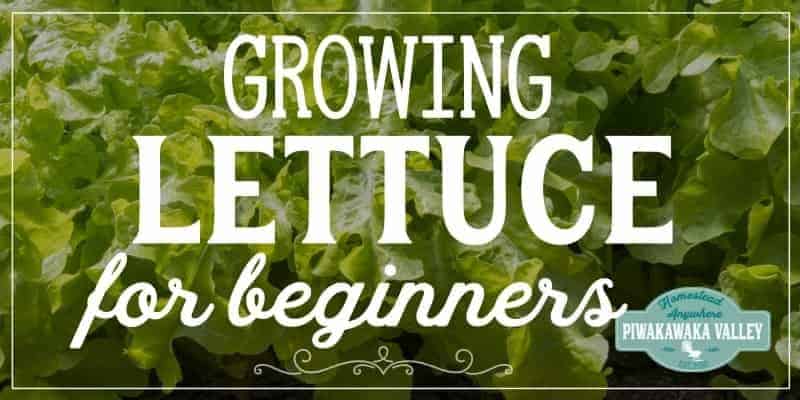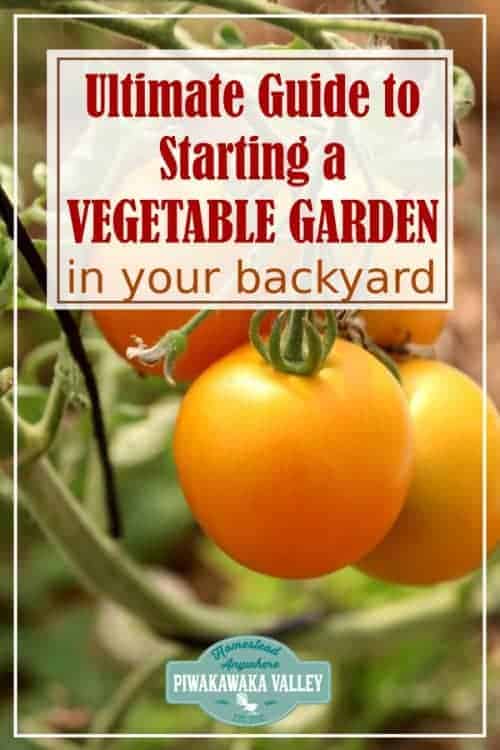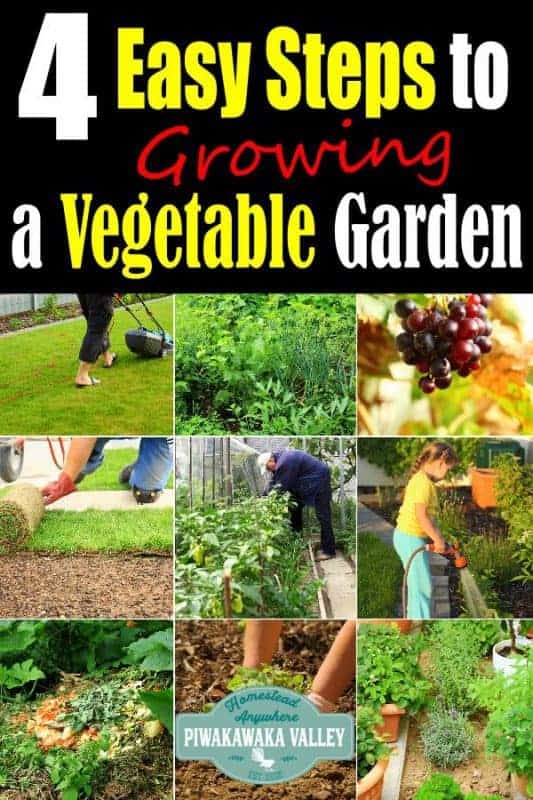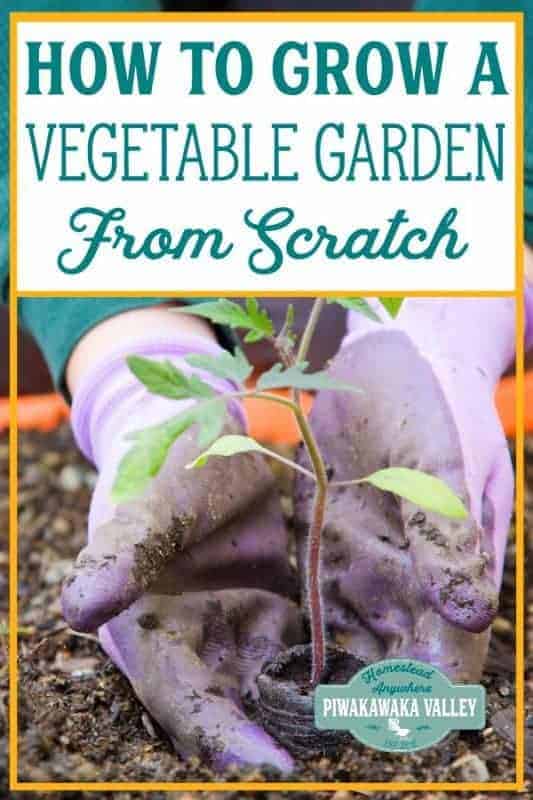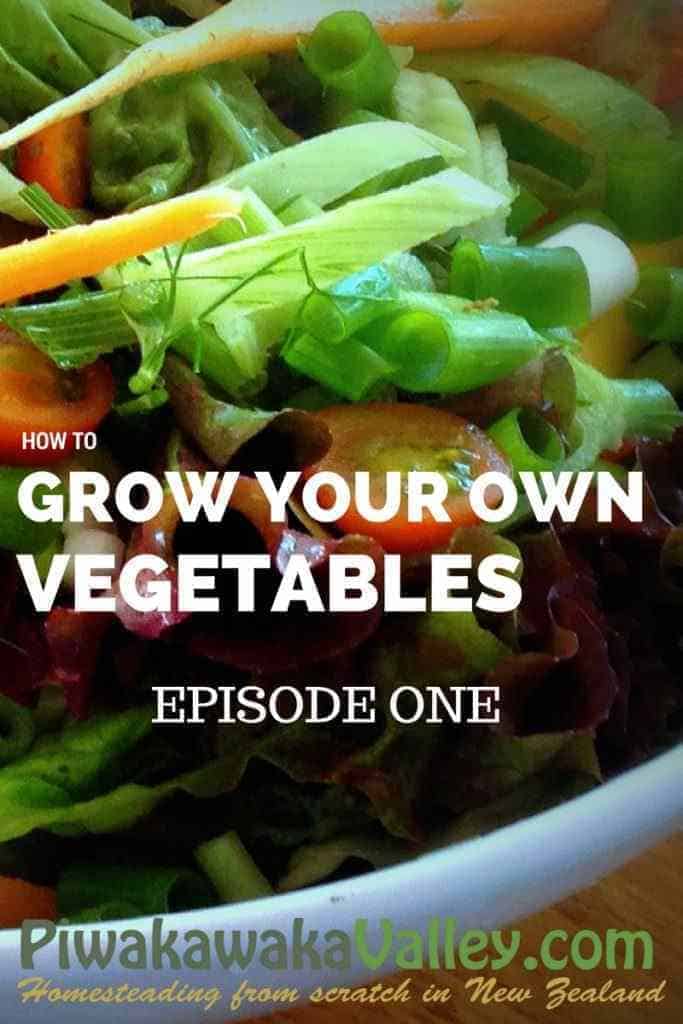This post was most recently updated on July 29th, 2021
Growing your own vegetables is very rewarding , nothing tastes as amazing as a bowl of totally home grown vegetables, and nothing more rewarding than watching your seeds grow to plants. However, if you are a beginner gardener, you might be wondering how to start a vegetable garden from scratch. In this article we will show you exactly how to get started, step by step.
Please read: This information is provided for educational purposes only and is not intended to treat, diagnose or prevent any disease. We encourage you to make your own health care decisions in partnership with a qualified health care professional.
This post contains affiliate links, this means at no extra cost to you, we make a commission from sales. Please read our Disclosure Statement
Starting a vegetable garden is one of the best ways to lower your grocery bill and decrease your food miles and carbon footprint all at once.
Start a vegetable garden from scratch
If you are wanting to start a vegetable garden from scratch you need to follow these simple steps:
- Find a suitable plot
- Feed your soil
- Choose plants for your plot
- Buy seeds or seedlings
- Plant out your plants
- Water them well
- Keep the weeds down
- Harvest them when they are ready
Read on to find out more about each of these steps and what to do to ensure your gardening success!
RELATED POST: How to build soil
Growing your own food
All you need to start a vegetable garden and growing your own vegetable plants is some decent soil and some seeds. If you don’t have a suitable garden plot, you might want to look into container gardening where you can grow vegetables in pots on a patio or deck.
If your soil has never been used for a garden before, you may find that it will benefit from some soil amendment, peat moss, homemade compost, worm castings or specially bought garden soil can turn the worst clay soil into a fertile vegetable patch.
Spring or early Summer is the perfect time to start your vegetable garden, there are some plants that you can plant in many areas almost all year, so the best time to start your new garden is now!
I would love to help you learn to grow a garden from scratch and hold your hand for your whole first year, find out more here.
Steps to Starting a Backyard Vegetable Garden From Scratch
If you are starting totally from scratch with growing your vegetable garden, don’t panic, we have you covered! Growing your own food is a noble quest, let’s get on with how to start planning your new vegetable garden.
1. Find a Plot for your New Vegetable Garden
Where your garden is in your backyard, and where your backyard is on the globe will greatly affect how much food you can grow, and what types of vegetables will thrive at your place.
The location of your veggie garden – the amount of sunlight it receives, proximity to a source of water, and protection from frost and wind etc – is important to your long term gardening success.
Find a plot in your yard or existing garden that gets plenty of sun and drains well that is ideally sheltered from the prevailing wind.
Watch the sun and shadows on your yard at different times of day for a few days and find the place that gets the most sun. Well draining soil during early Spring won’t be boggy or mossy, but will probably still be damp.
If there is puddles, sloppy mud or it is covered in moss or buttercups it is probably too wet to use – but you could try a no-dig built up garden like this .
A raised bed vegetable garden bed gives you the opportunity to add fertile soil and helps get around drainage issues. Raised bed soil tends to warm faster in spring meaning that you will get faster earlier growth in your vegetables.
RELATED: Planning your homestead using permaculture zones
Got Limited Garden Space? Grow Up, Not Out
People with tiny gardens, or urban backyards will want to grow as many crops as possible on vertical supports.
If you have a lot of space will still need to lend physical support to some of your vegetables, such as climbing varieties of peas and pole beans.
Other vegetables that are commonly trellised include vining crops, such as cucumbers and tomatoes.
Look at your fences, can you climb something up them? Espalier a tree along them? Hang growing baskets from them?
2. Build your Soil
The foundation of any garden is its soil. The better fed your garden soil is, the better your plants will grow and the more nutrient dense they will be for you and your family to eat.
Once you have found your sunny patch, mark it out and remove any weeds growing in the area. If it is a new garden, scoop off the lawn and roots with a shovel and toss them in a pile somewhere else to rot down.
The dirt that is left in your new garden you should break it up with a garden fork so you are left with fine lumps of soil.
To this you can add any of the following: Well rotted compost, stable waste, grass-eating-animal manure (cow, sheep, horse, rabbit, goat etc), kelp or sea lettuce, bought compost or worm castings. Be generous and fork it in lightly.
Vegetable plants need nutrients, and those will come from either the soil or the regular addition of fertilizer. While some growers use commercial fertilizer, that will increase your costs and is often not natural or organic.
Homemade compost or composted animal bedding (chickens, rabbits, goats, cow, horse) is my preferred way to fertilize our vegetable garden plots, and it’s essentially free.
Organic matter improves the fertility, the structure and the tilth of all kinds of soils. In particular, organic matter provides a continuous source of nitrogen and other nutrients that plants need to grow.
Organic matter also provides a rich food source for soil microbes. As organisms in the soil carry out the processes of decay and decomposition, they make these nutrients available to plants.
Soil is divided in to 4 main types – sandy soil, clay soil, silty soil and loam soil. The ideal garden soil is a loamy soil. It is soft, friable, holds moisture, but not too much and does not ‘clag’ together like clay does.
How to turn bad soil in to good soil
3. Choose plants for your New Vegetable Garden
The plants that you grow in your vegetable garden need to be appropriate for your climate.
In tropical areas, you can easily grow tomatoes and peppers outside, where we live, you need a tunnel house to grow them.
For the best plants to grow in your area at certain times of the year check out our planting guides.
When starting a garden from scratch, choose a few of your favourite vegetables that will grow in your area and start growing them first.
We have a range of beginner gardener growing guides for a variety of plants here. There are delicious plants that you can grow at home that you cannot buy at the store and plants you can grow to make your own flour.
4. Buying Seeds and Transplants for a new Garden
When starting a vegetable garden from scratch, you will need to order/buy/steal some seeds if you plan to grow from seed.
I prefer to buy organic seeds from somewhere like Kings Seeds (NZ), there are lovely boutique family run heritage seed producers like Seeds for Generations (US) .
For USDA zones 8, 9 and 10 you should try carrots, kale, cabbage, lettuce, broccoli, onions, leeks, beetroot, peas and swiss chard/silverbeet to start off with. These are all fairly easy to grow.
Before you even start to dig your vegetable garden, you can get many of your seeds started inside.
Seeds take 4-8 weeks before they are ready to transplant, and most leafy plants transplant well.
Avoid trying to start carrots or other root crops in seed trays, they don’t transplant well.
If you are new to gardening, you will probably want to start with some existing plants, these are commonly called seedlings or transplants.
You can buy seedlings for your new garden at your local plant nursery and many large stores also stock vegetable plant seedlings.
You might consider growing some vegetables from scraps and possibly add in some nitrogen fixing plants , or other companion plants . Cover crops are a good addition too.
5. Planting out a New Vegetable Garden
Once your garden bed is dug over and has had some compost or grass-eating-animal manure added, it is time to plant your plants.
Before you do plant your plants, plan out where they will all go.
Place plants that will grow taller at the back to provide wind shelter for the other plants and to avoid shading the other seedlings.
Some plants grow really well together, and others don’t, so check out our list of companion plants here.
Some plants, like lettuce, prefer partial shade, so they can be planted near things like peas or beans that will grow tall and shade them from the hot afternoon Summer sun.
To plant a seedling, once the soil is ready simply make a hole as deep as the seedling tray cell and one and a half times as wide.
Plant the seedling just as deep as the existing soil in the seed tray cell, if you bury the stem it can (and probably will) rot and die.
Push the soil back around the new seedling and firm the soil with your hands.
Water the seedling well for the next week every day or every other day until you see new growth. Then you just need to water the soil when it starts to get dry in the top 1/2 inch.
RELATED: 20 tips from experienced gardeners for newbies
RELATED: Hardening off and planting plants
6. Maintaining a New Vegetable Garden
A new garden will usually take a little more maintenance than an established one, but if you keep on top of those weeds, and add plenty of compost, your garden will become lower maintenance as it gets older.
Watering your New Garden
This is best done in the morning so that the water has time to soak in. Done in the heat of the day it means much of the water will evaporate before the plant or soil can absorb it.
Watering in the afternoon, on the other hand, can mean foliage will be damp at night which can encourage fungus problems.
Weeding Your New Garden
Keep on top of those weeds! An hour weeding the tiny weeds can save you days of weeding once they are bigger!
Vegetable plants are easily overpowered by weeds while the plants are getting established, once they are bigger, they will help stop the weeds growing.
Weeds steal useful nutrients from the plants you are trying to grow, so you are best to keep the ground well covered in mulch to keep them at bay.
Natural pest control in the Vegetable Garden
There are some things that you can do to naturally help keep the pest load down in your vegetable garden.
Crop rotation, regular composting, mulching and removing old or diseased plants or leaves will help keep any prospective issues under control.
Aphids are pretty much part of gardening, and you can use an organic spray that you make at home to keep on top of them.
Read 5 reasons your plants may be struggling
Encourage beneficial insects to your garden by planting some of these plants either in the garden or around the edges.
Crop Rotation in a New Vegetable Garden
If you follow Charles Dowding on You Tube (you should!) he has been running an experiment where he has grown the exact same crops in the same area for over 4 years now with no ill effects.
He makes sure that he replenishes the soil with compost one or two times a year, and he doesn’t even dig it in, he leaves it as a mulch on the top of the surface.
There are great ideas behind crop rotation – including better nutrient cycling and plant health. But for the new garden, it is probably a hassle that is not worth you worrying about.
Keep Good Records of Your Gardening Journey
It took me far too long to start a gardening journal, but I tell you life has become so much easier for me now that I have one!
I can record what varieties I plant and when, then I go back and add in when the plants were ready, any issues that I had and whether that variety is worth trying again.
You could use something online like Google calendar, and add in photos, recurring dates of first and last frosts for each year, late or early snow etc.
Succession Planting when Starting a New Vegetable Garden From Scratch
Planting crops in succession is yet another way to maximize growing area in the garden. Succession is simply putting in another crop after harvesting the first one.
Often gardeners will prepare their garden beds and sow or transplant all their crops on only one or two days in the spring, usually after the last frost date for their location.
While there is nothing wrong with planting a garden this way, you get a much bigger harvest if you plan to grow multiple plantings.
Plus, wouldn’t it be easier to plant a few seeds or transplants at a time, throughout the course of the whole growing season, rather than one or two massive days?
Plan to plant something new in the garden almost every week of the season, from the first cold-hardy greens and peas in late winter or early spring, to heat-loving transplants such as tomatoes, peppers and eggplant once the weather becomes warm and settled.
Then after mid summer, start planning for the winter.
Sow frost-hardy crops from midsummer through mid-fall, depending on your climate.
Clean out beds as you harvest crops to make room for new vegetables that will take their place. You can even interplant crops that grow quickly (radishes) alongside other vegetables that require a long season (carrots or parsnips), sowing their seeds together.
This means that you can harvest the quicker growing crops, then leave the room for the slower plants to continue to grow.
Another benefit of succession planting, of course, is the ongoing, manageable supply of fresh vegetables.
A Quick Lesson in Mulching a New Vegetable Garden
Once I have removed all the weeds from a new garden, I like to mulch my entire vegetable garden in wood mulch (the result when you shred whole branches, bark, wood and leaves all in together).
I find it suppresses weeds very well, breaks down beautifully, doesn’t steal nitrogen from the dirt (as long as it is put on top not mixed into the soil) and it encourages worms like you wouldn’t believe.
I have tried straw in the past and it is definitely better than nothing. But next time I would throw it to the chooks first and get them to eat the remaining wheat/oat seeds as I had lots of them sprouting up in the garden.
With a good thick mulch you just part the mulch to plant your seedlings, or pull it back entirely when sowing directly, replacing it around the plants once they have grown.
I have ordered wood mulch from our local arborist, you might be lucky enough to find some for free from the city tree care people, but you will probably have to be able to take a whole truck load at once. It is worth checking with your local councils.
I am keen to suppress weeds as best I can as soon as I can seeing as we are lucky enough to be starting with weedless bare dirt, and we are competing with couch (said kooch) grass, buttercups and gorse seedlings.
Read here for Episode Two, a lesson in growing from seed .
For further reading, I really recommend all of these books. I own every one of them and they are amazing resources!
Read here for Episode Two, a lesson in growing from seed.
For further reading, I really recommend all of these books. I own every one of them and they are amazing resources!
Please Pin and Share with your friends and family!






